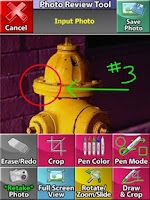The good news is that mobile application developers can focus more on providing business value, rather than coding clever mobile client and mobile middleware features. This is good for the entrepreneurs that have started with an existing back-office business application in mind and simply wants to support it with a mobile client.
The bad news is that many mobile application companies have already invested heavily into their own mobile client technology, mobile application development tools and mobile middleware platforms. Why is this bad? Because most enterprise buyers won't appreciate the investment.
Enterprise buyers own smartphones. They download mobile applications over the weekend for $1.99. Their expectations have changed. In the past, mobile applications were a novelty surrounded by mystery and complexity. Mystery and complexity made it easy to charge $500 or more per mobile user. Now mobile applications are only a finger stroke and a password a way on their favorite mobile app store.
The mobile application itself is not where the biggest value can be found. The biggest value is in the following:
- Mobile client integration with enterprise business applications and data
- Support for enterprise business processes
- Support for ERP (enterprise resource planning) workflows
- Support for ERP data requirements
- Integration with high value data sources (web services)
- Support for complex and niche business processes
- Support for high value data collection hardware (survey equipment, RFID, Barcode, GPS etc.)
The value of mobile business applications, no matter what the original investment was, will be attributed to the above capabilities not the mobile client itself. ROIs need to be achieved by supporting core business functions in mobile environments. It is the efficient support for a business process, not the mobile client where the real value can be found.
As a mobile software vendor, having the best of breed enterprise mobile applications will not be good enough. Companies will continually seek to simplify their IT environments and reduce the number of applications they are required to support. They will look to find mobile solutions that are hosted in a SaaS (software as a service) business model in a cloud computing environment, and that are most closely aligned with their primary ERP or key business software solution either through ownership, endorsement or partnership.
Early adopters will experiment with best of breed and leading edge technologies, but the masses want simplicity and security.
Do you agree? I look forward to your thoughts and comments.
***********************************************Author Kevin Benedict
Independent Mobility Consultant, Wireless Industry Analyst and Marketing Consultant
www.linkedin.com/in/kevinbenedict
twitter: @krbenedict
http://kevinbenedict.ulitzer.com/
http://mobileenterprisestrategies.blogspot.com/
***********************************************




